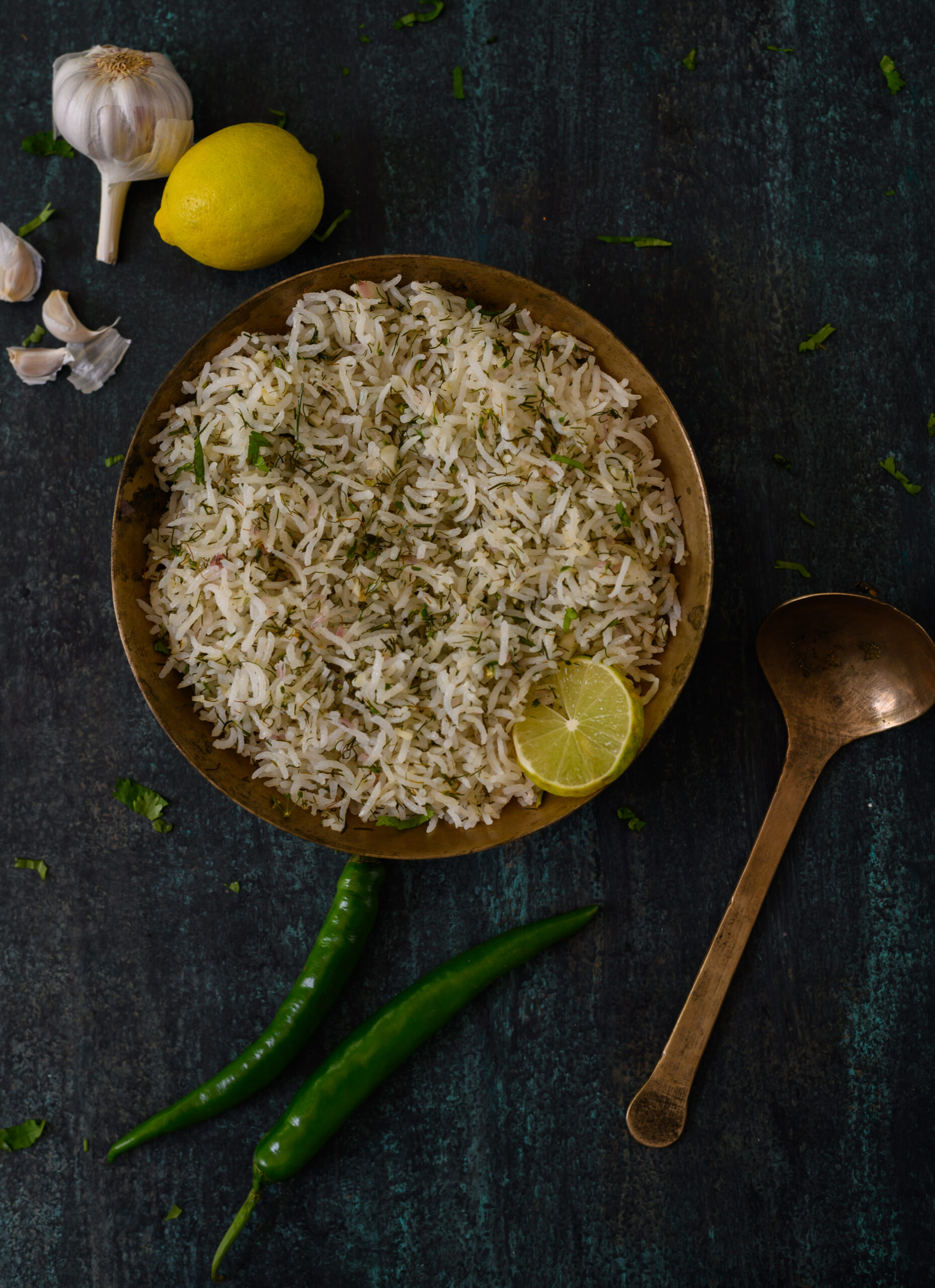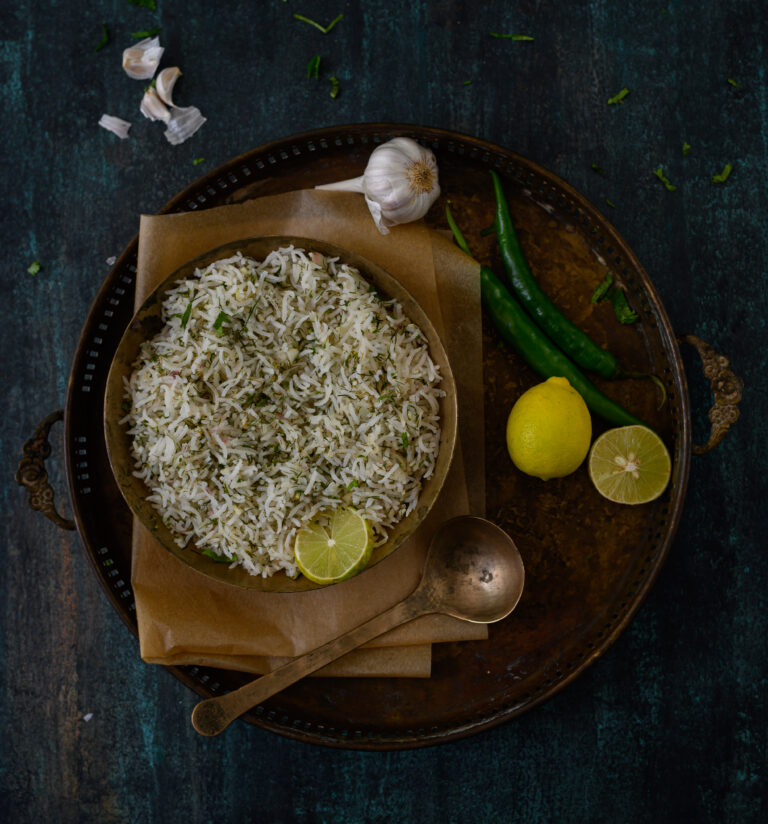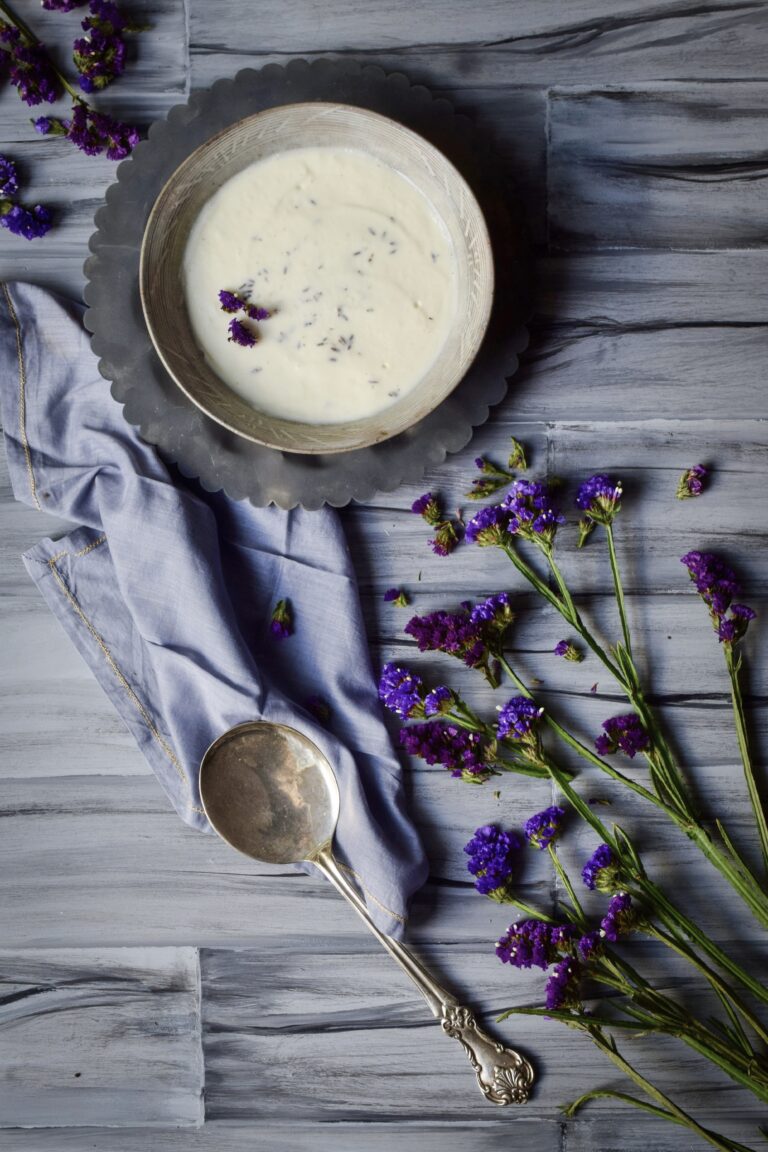Nature knows how to keep the balance. For example, during the mango season, when we enjoy and relish the sugary sweetness of the fruit, it’s also simultaneously the season of the jamun or Java plum, which reduces sugar and is good for diabetics. Nature just has this way of finding the perfect complement. Nature often shows us how to cure and heal through following its inherent logic. Even here, there’s an interesting balance. The very same ingredient which is bitter or boring in a remedy may be the one that lights up another dish. It all comes down to the preparation. One of the ingredients which exemplifies this harmony for me is dill.
I’ll be the first to admit that I was never a fan of dill, a hardy plant which belongs to the celery family and is known as “suva” in Gujarati and “sada-kuppi” (or colloquially as “sovai keerai”) in Tamil. In India, it has a largely medicinal usage. High in folate and calcium, it helps women lactate better post-delivery and helps in rebuilding tissues. So it’s very popular in dishes served to expecting women and those who have just given birth, and it was during my own pregnancies that I encountered it myself.
In addition to being beneficial where pregnancy and post-natal care are concerned, it’s also good for digestion, is an anti-flatulent, and is rich in iron, folate, fibre and calcium. A typical and very easy preparation is to soak 1 teaspoon of dill along with 1 teaspoon of methi (or fenugreek) seeds overnight. The following morning, the water is consumed after the preparation has been cooked for some time.
Dill, the herb used here, is different from dill, the pickle. You may be familiar with the latter in the West, where it’s added to gherkins to enhance the taste and is especially popular in Russia and the USA.
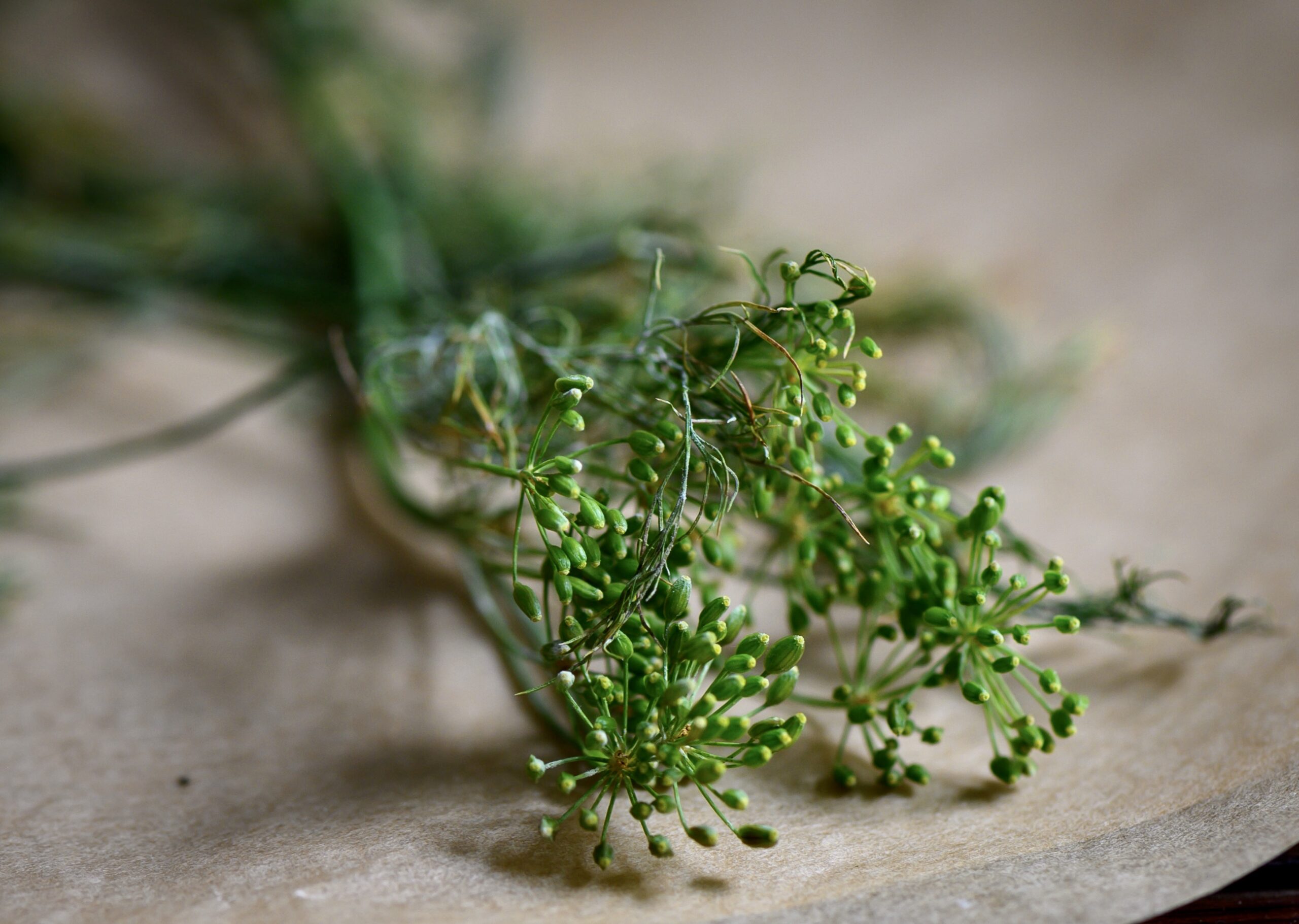
My mother found many ways to incorporate dill into my own maternity diet. You could call what she made “dill delicacies”. As I said earlier, it took me a while to acquire a taste for them. However, as a believer in old traditions and customs, I now see these dishes as coming from a place of “grandmothers’ science”, based largely on nature and seasonal availability. I would absolutely continue to pass down this wisdom, and give the next generation such dill-delicacies when they come to be expecting themselves. I am glad to say that along the way, I picked up a new dill-delicacy to add to this menu. Fortunately, it’s a very appetising one: dill rice.
The first time that I had dill rice, it was at my dear friend Sheila Verghis’ home. We were having a pot luck, to which I remember having carried a sticky date pudding. Sitting among childhood friends, sharing our school memories, we devoured Sheila’s delicious homemade dill rice. Considering how much I had disliked all those dill-delicacies which were prepared for me during pregnancy, it was a wonderful surprise to encounter the ingredient in a way that was tasty, yet still healthy and complete with nutritional benefits. This is my own version of the very first dill-based dish I actually enjoyed. I now make it frequently at home, especially when my children are visiting. It’s one of my healthy rice specialities, alongside others like my spinach rice.
While preparing this recipe, I had an odd experience. I had always thought of dill as being easily available, and was surprised to learn that none of my usual markets or grocery stores were carrying it when I went looking. This made me realise that despite how it simply requires direct sunlight and rich soil to grow and is said to be in season all year round, the herb is more sensitive than I’d believed. Did the recent drought contribute to a reduced harvest? I often wonder where our ingredients come from and how to revive and sustain them, and my quest for dill reaffirmed the importance of these questions.
Happily, I found some fresh dill just in time to make this recipe… For someone who used to dislike it as much as I did at one point, I couldn’t have been more pleased to have it on my plate! In the form of this wonderful, fragrant rice, who could resist a second helping?
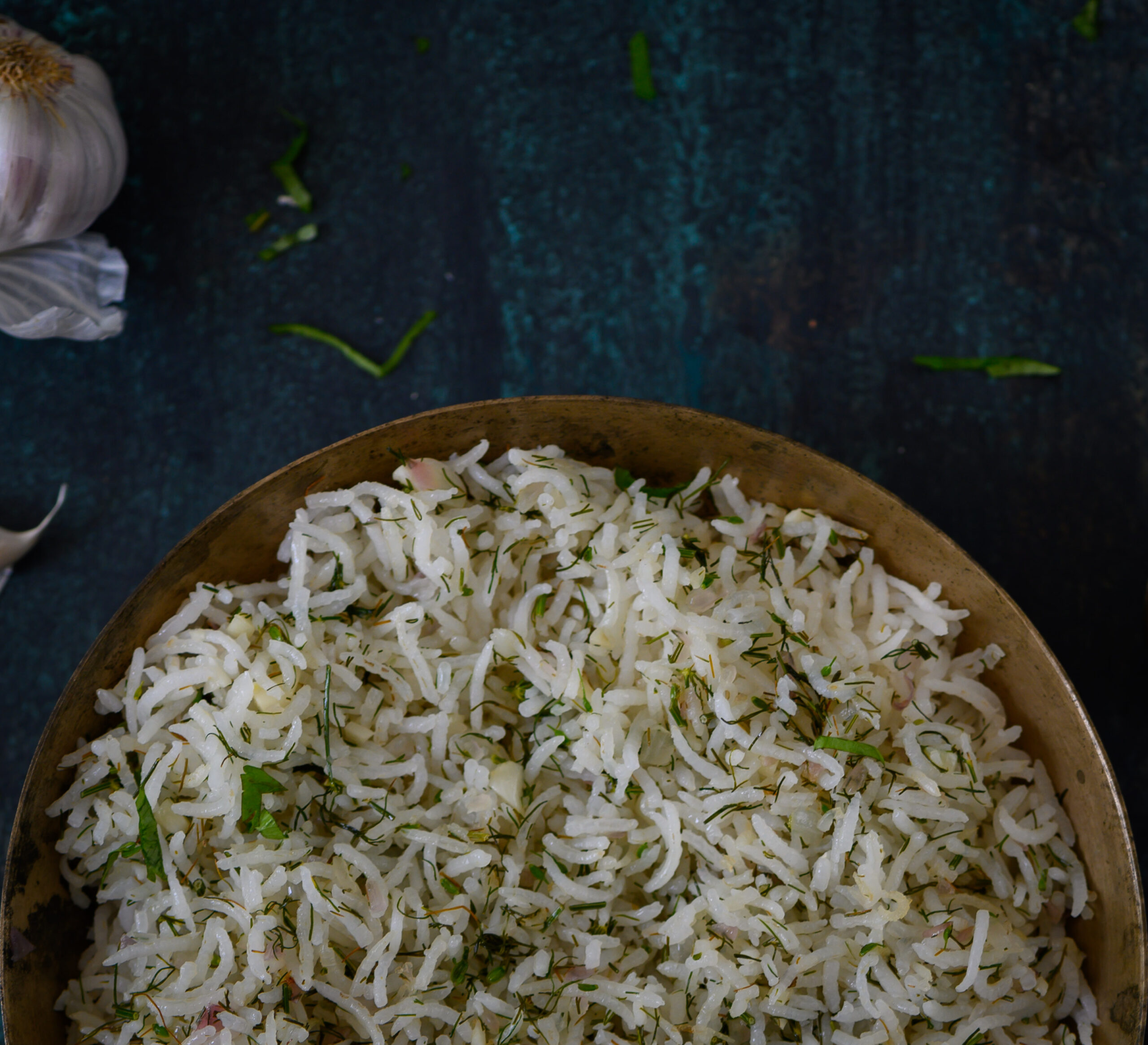
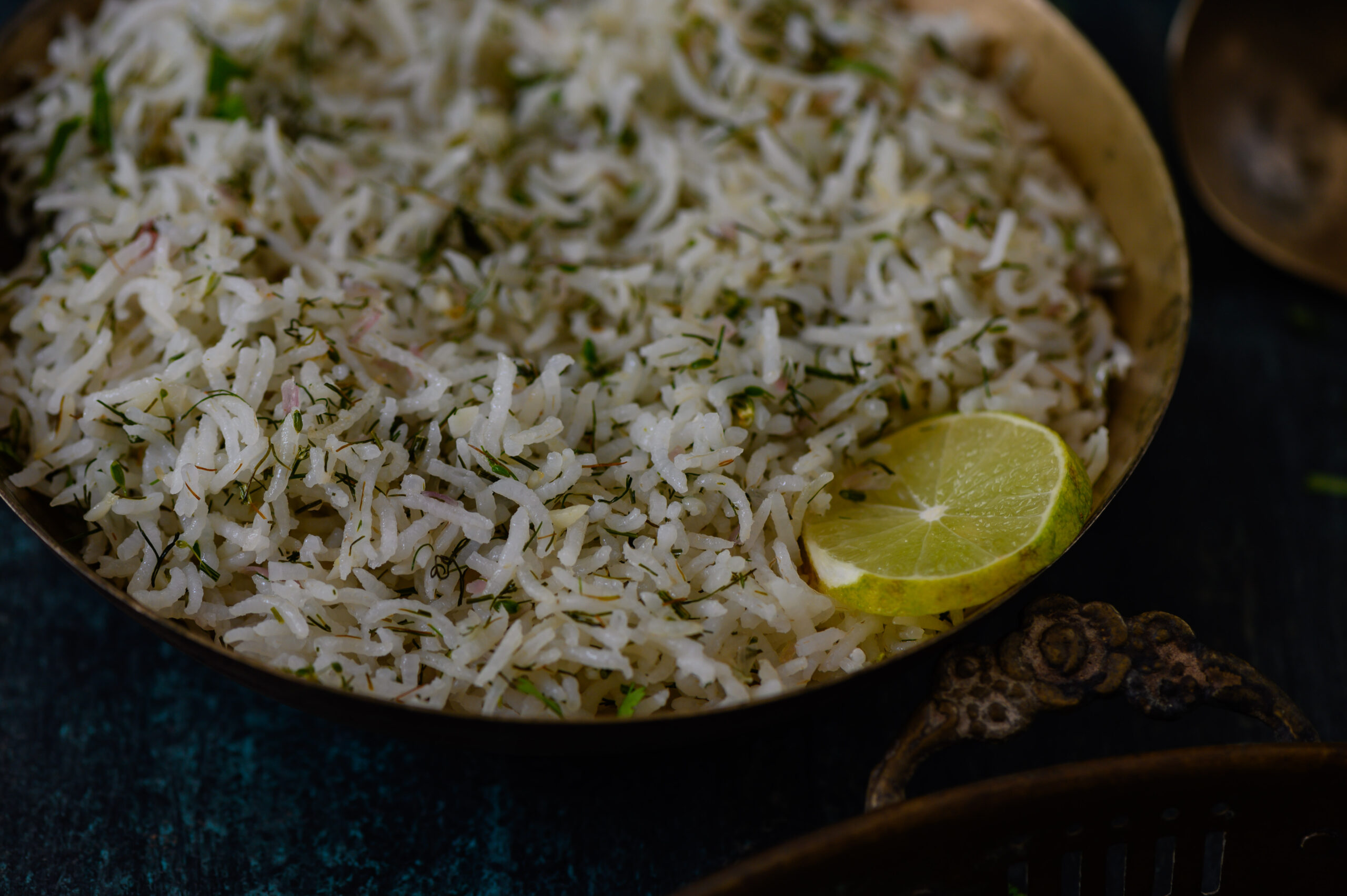
Dill Rice
(Yield: for 2 people)
½ cup rice
1 tablespoon finely chopped onion
2 garlic pods
2 tablespoon finely chopped dill
1 tablespoon oil
Salt to taste
A squeeze of lemon
There are various ways to make dill rice, and I like this method as it’s so simple and the flavour of the herb really stands out. If you enjoy the taste of dill, you can increase the quantity used in the recipe.
Wash, pick and cook the rice till each grain is separate.
In a kadai, add the oil. Allow it to heat and then add the onions and garlic. Sauté for a few minutes.
Now add the dill, and sauté and stir for a minute. Finally, add the cooked rice together with the salt. Mix well and cover with a lid so that the dill rice retains its softness and flavours. Top it off with a good squeeze of lemon when serving.
Dill rice makes for a great travel partner as it stands on its own in terms of flavour and doesn’t need much accompaniment. What I like most is that it’s versatile, and works well with both Indian and Western menus. When serving a complete meal, it will go equally nicely with a Western-style baked casserole or an Indian-style dry potato roast.
Dill rice is a very simple preparation, and a way to effortlessly make a meal exciting when you neither want to serve plain white rice nor a rich pulao or fried rice. Something about sautéing the herb and having its distinctive flavour mix with the familiar condiments of onion and garlic just comes together in a beautiful dish. I think it’s simply dill-icious! If, like me, eating dill-based home remedies gave you an aversion to the ingredient, I hope this will be the recipe that changes your mind. I’d love to know if it does.
